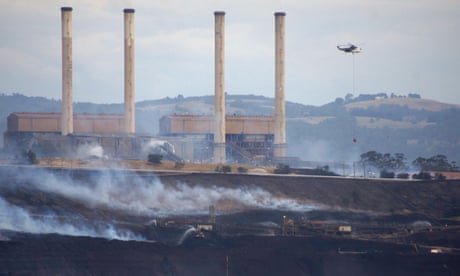- by foxnews
- 13 Mar 2025
Smoke exposure from intense fires linked to long-term respiratory and cardiovascular disease
Smoke exposure from intense fires linked to long-term respiratory and cardiovascular disease
- by theguardian
- 15 Feb 2023
- in news

Just a few weeks of exposure to the smoke from an intense fire has years-long respiratory and cardiovascular impacts, according to new research which sheds light on the possible long-term effects of bushfires.
Researchers studying the aftermath of the 2014 Hazelwood coalmine fire have linked exposure to fine particulate matter (PM2.5) in smoke to an increased risk over the following five years of needing to visit an emergency department for respiratory problems.
PM2.5 are tiny particles with a diameter of 2.5 micrometres or fewer, which are breathed into the lungs and can enter the bloodstream.
An increase in PM2.5 of 10 micrograms a cubic metre was associated with a 10% increase in respiratory presentations over half a decade, the study found.
Among people who had been exposed, the risk of emergency presentations for cardiovascular diseases including ischaemic heart disease was elevated for two-and-a-half years after the fire.
The Hazelwood coalmine was ignited by a bushfire in 2014 and burned for 45 days, resulting in plumes of smoke and ash over the Latrobe valley in Victoria. Previous analysis has shown that 24-hour PM2.5 levels exceeded the Australian air quality standard of 25 micrograms a cubic metre in parts of the town of Morwell on 23 of those days, sometimes reaching levels 19 times the limit.
The new research, published in the journal Environmental Research, compared the hospital records of 2,725 Latrobe valley residents from 2009 to 2019 against data about their smoke exposure during the mine fire.
The Hazelwood research showed that the particulate matter in coalmine smoke was of higher health risk than other sources of PM2.5, he said.
Guo said governments and communities would need to do more to prepare for future fire events, given that with climate change bushfires are beginning earlier and the intensity of fire weather is increasing.
Much of the previous research into the effects of the coalmine fire, as part of the Hazelwood health study, has focused on short-term impacts, with findings such as an increase in cardiovascular-related deaths in the six months after the incident.
The president of the community group Voices of the valley which was formed after the Hazelwood fire, Wendy Farmer, said the incident affected many more people than were tracked in the study.
- by foxnews
- descember 09, 2016
Flight passenger shares 'infuriating' moment when man intrudes on her leg space: 'Please don't do this'
A traveler says a fellow passenger intruded on her space on an airplane. Social media users reacted to the post, with some referring to it as a "manspreading" moment.
read more


